
Losing patience with link building?
You're definitely not alone.
You've been working on your strategy for a while, and should be seeing some decent results by now, right?
Unfortunately, not necessarily.
Nothing in SEO is meant to be rushed, and what might be working really well for someone else may not work at all for you.
When you find yourself in a situation like this, it can be tempting to buy your way right into the competition by investing in software that's designed to cut corners.
But remember that SEO isn't a contest between who has deeper pockets. Strategy beats firepower, and you don't need the biggest guns to execute the most effective strategies.
If your strategy is stalling, it could be time to reassess, pull it right back and start again at the beginning.
That means getting back to basics.
Sometimes, starting simple and looking at your links again with fresh eyes can be exactly what you need to rebuild your strategy into one that works.
Cue in Google Analytics.
What Is Google Analytics?
As far as tracking backlinks goes, Google Analytics is a great tool to get you started. It provides a bird’s-eye view of your website’s data, from performance metrics to your known traffic sources.

Here’s a quick breakdown of its benefits:
It’s Easy to Access and Use
First and foremost, Google Analytics is a free tool that can be accessed by anyone with a Google Analytics account (that's pretty much anyone with a website). This makes it a really good place to start, because you already have all your initial data without having to download or subscribe to any other tools.
It's not a trial version of the paid service, Google Analytics 360. It is in fact a standalone platform, with every important feature unlocked out of the box.

While Google Analytics isn't plug-and-play software, you don't need an expert to integrate it into your marketing ecosystem either. At most, you’ll be looking at an entire day learning the ropes and setting up the platform.
It’s Comprehensive and Extensive
Google Analytics provides a really good spread of data for a starter tool. It can help you track everything, including a handful of data delivered in real time.
This includes your traffic sources, content page views per second, conversions and more.
It Makes Tracking Backlinks a Breeze
Lastly, Google Analytics consolidates all data on your website in a single visual dashboard.
This includes all backlinks or “referrals” to any page on your website, making it easy to see what's going on with your links.
How to Track Backlinks Using Google Analytics
Now that we’ve covered the benefits of Google Analytics, it’s time to get down to the nitty-gritty of backlink tracking.
If you don't already have a Google Analytics account for your web property, the first thing you need to do is to generate one. You can do this by going to the “Admin” section and selecting “Create new account” from the drop-down menu.
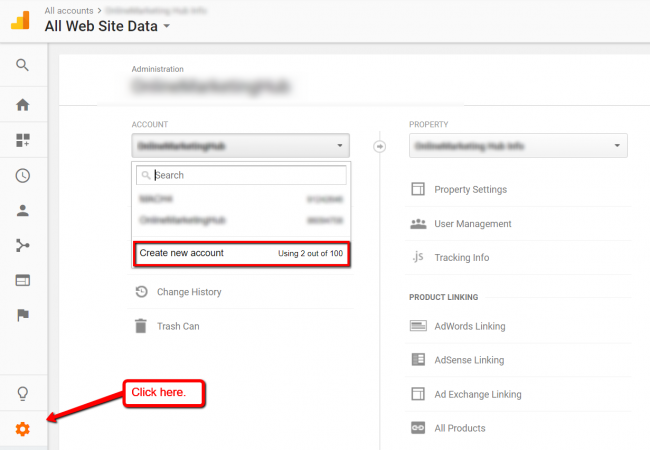
On the next page, supply the necessary information such as your website URL, industry category and account name.
Also, read the “Data Sharing Settings” to make sure you provide only the information you're comfortable disclosing.
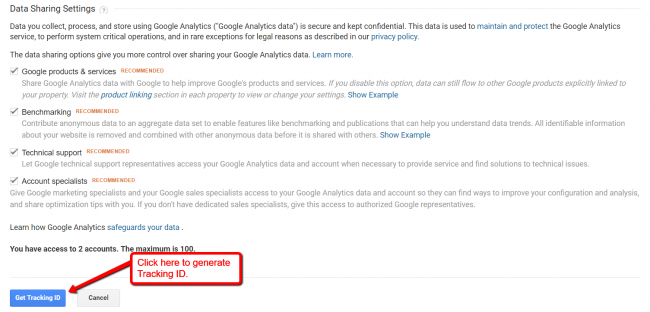
Once you agree to the Google Terms of Service, you’ll be taken to the admin page for your new property. Here, you can find important information, such as your Tracking ID and the Global Site Tag.
To enable tracking for specific web pages, go ahead and copy the Global Site Tag:
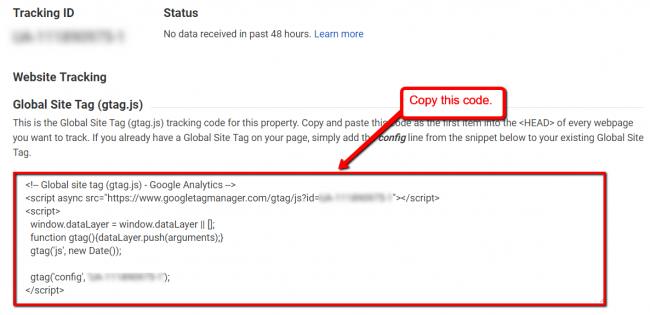
You can then manually paste it right next to the <header> tag of the pages you want to track. This can be done through the FTP client offered by your web host.
Just remember that making direct changes to your website’s code can be risky, so be sure to create backups.
If you’re using WordPress, a faster alternative is to use a plugin like GA Google Analytics. It works by automatically embedding your tracking code without the risk of breaking anything by accident.
Verifying Google Analytics Integration
To verify if you’ve successfully linked your website to Google Analytics, go to the “Home” tab. If your website is currently active in your browser, then you should find your session under “Active Users right now.”
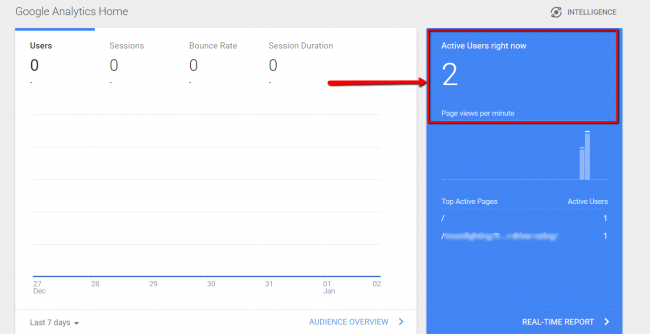
Keep in mind that it takes Google Analytics 24-48 hours before it can pull sufficient data. This includes the analysis of your site referrals or backlinks.
Tracking Your Links
Once website data is available, you should be able to view and track all your backlinks from the “Acquisition” tab. Simply navigate to “All Traffic” and select “Referrals.”
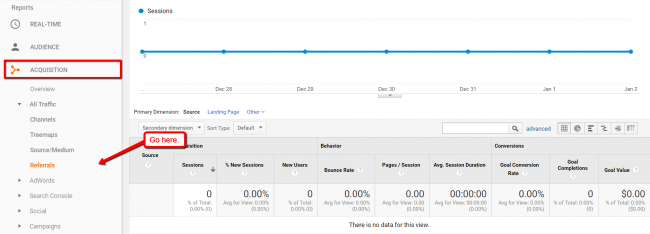
This will open up the “Referral Traffic” section, where you can find all linking domains under the “Source” column.
You can then view all individual backlinks by clicking on one of the domains and checking the “Referral Path.”
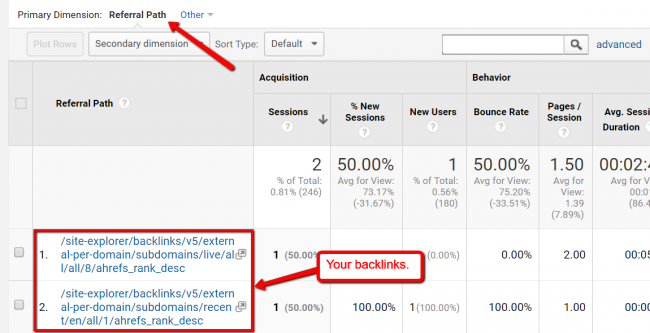
That’s it! You now know how to check the backlinks to your website using Google Analytics.
Exporting Your Data
While Google Analytics is a great tool to start with, you'll need to use it together with other SEO tools to dig deeper into the data and draw conclusions from your analysis.
To do that, you'll need to know how to create reports. Don’t worry—all you need to do is to click the “Export” option and select the report format you want to use. This can be PDF, XLSX, CSV or Google Sheets format.
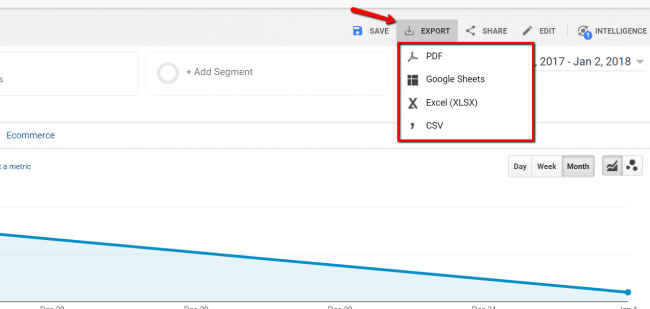
Your Google Analytics data also includes a handful of useful metrics related to the link’s quality. This includes the average pages viewed per session, bounce rate and session duration.

By switching to the “Landing Page” primary dimension, you can see which pages get the links. You can use this to gauge the popularity of your content and the quality of traffic being acquired.
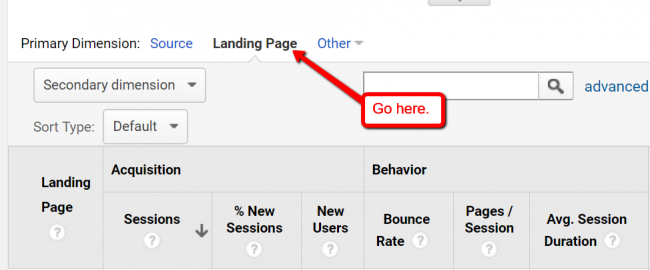
Finally, Google Analytics has different viewing modes to help you understand your backlink profile. By default, backlink information is presented in the “Data” mode.
Click the viewing mode buttons at the upper-right corner to change this:
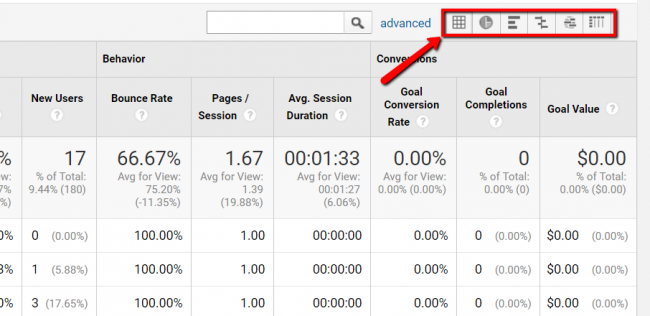
For example, the “Comparison” mode allows you to measure the quality of links side by side, using a certain metric. This can be specified through the drop-down menu:
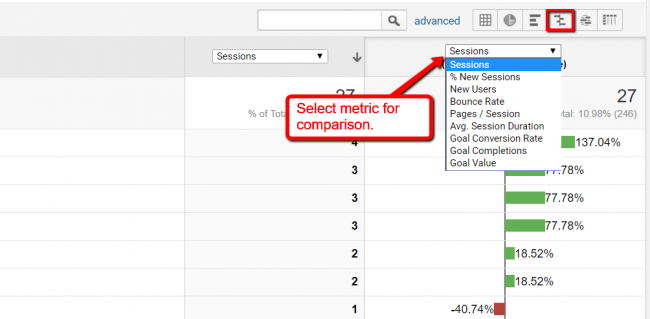
Making Backlink Tracking Matter
When it comes to tracking backlinks, Google Analytics is more than equipped for the job. It can even help you measure the impact of each link in terms of traffic and user engagement.
However, you can’t deny the fact that setting it up can be quite tedious. Not to mention that the data simply isn't comprehensive enough for a full backlink audit or analysis.
It’s also difficult to determine the SEO impact of individual backlinks without resorting to third-party tools. But when you use Google Analytics in conjunction with a link discovery tool like SEOptimer, you can easily measure link quality signals while skipping a ton of number crunching.
Assessing the Value of Links
Apart from scanning your website for backlinks across the web, SEOptimer also provides valuable insights on the quality of each link.
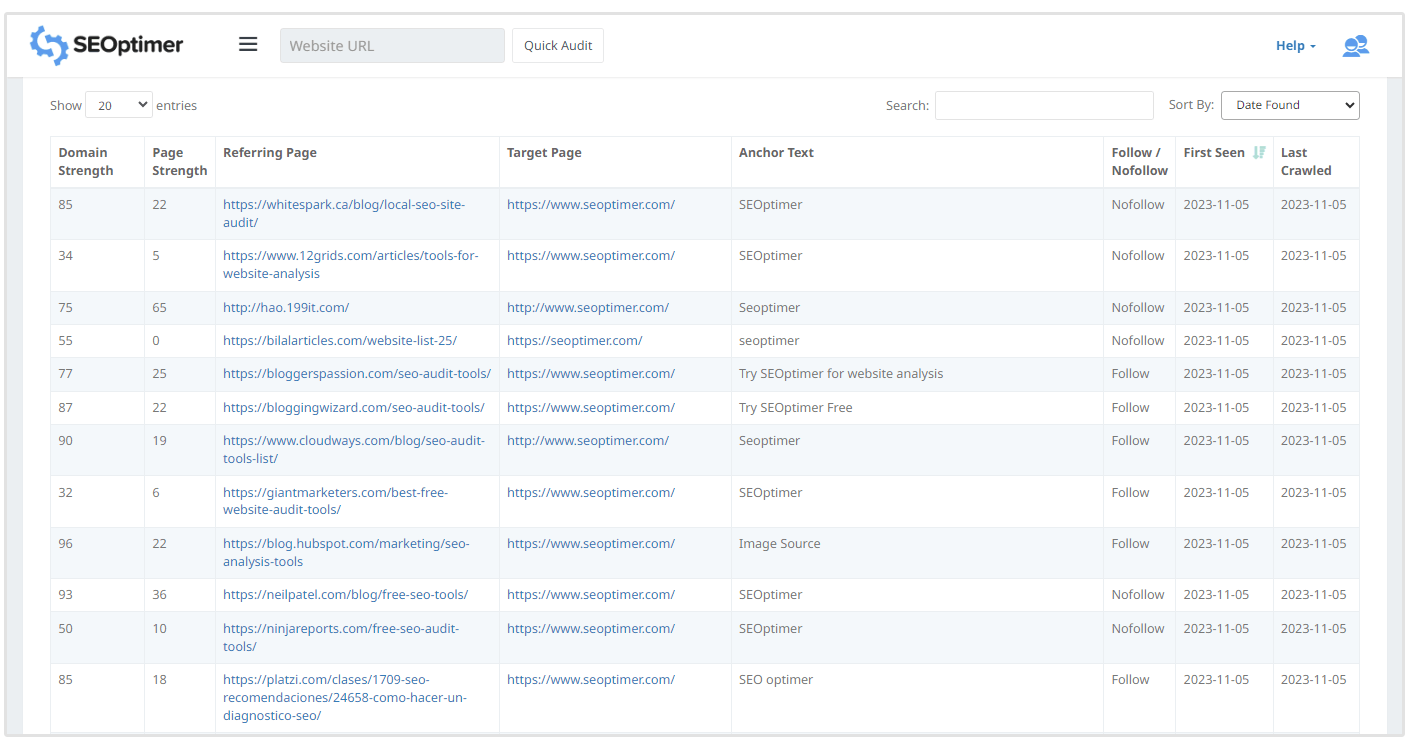
By using SEOptimer to expand on your initial data from Google Analytics, you can build out the complete picture of your links, determine which links are helping you and which links are harming you, and pinpoint any areas that you've been missing.
Maybe there's a high-traffic page on your website that you weren't aware of, and that could be an excellent link opportunity with the right outreach.
Or maybe there's a niche in your industry that you'd overlooked and that your competitors are getting great links from.
Whatever it is, a stale link building strategy can be revitalized—you just need to start with the basics and go from there.
Final Words
Using Google Analytics is a great first step towards holistic SEO and an evolving link building strategy.
But as capable as it is with backlink tracking, Google Analytics can only get you so far. If you want to do more with your data and take it from backlink tracking to full-blown analysis, you’ll have to acquire bigger guns like SEOptimer eventually.
Still, we hope you found this post useful and enlightening. If you want to know more about Google Analytics, here’s a post on how to track domains from multiple accounts.










